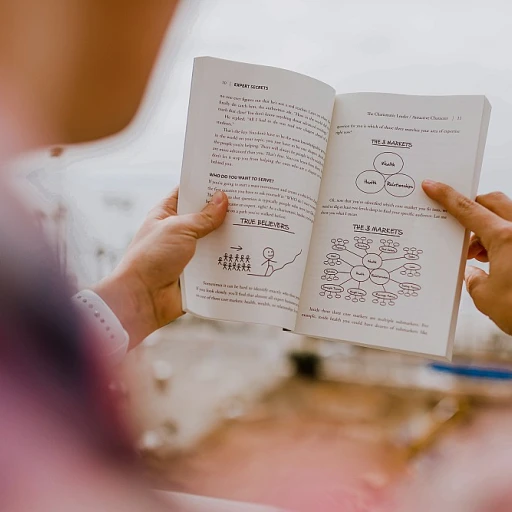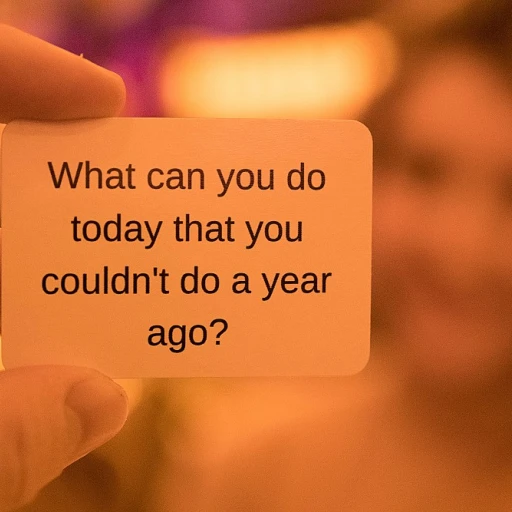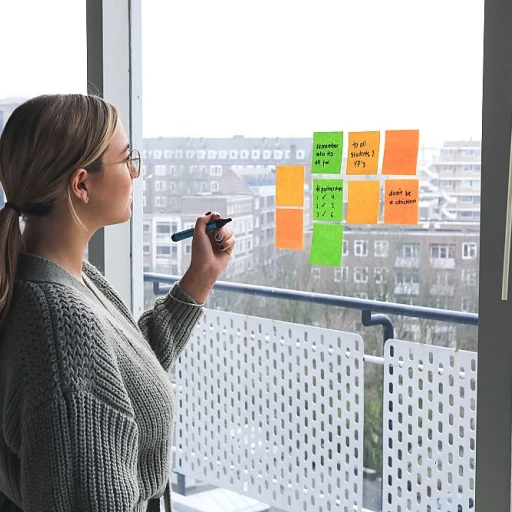
Understanding the Skills Gap in Education
Bridging the Divide Between Education and Career Requirements
Understanding the skills gap in education requires examining the disconnect between the abilities students acquire in school and those that are demanded by employers in the workforce. This gap not only impacts individual career success but also bears broader socioeconomic ramifications, influencing opportunities for upward mobility and sustainable economic development. Educational institutions have traditionally placed significant emphasis on academic achievements, often overshadowing critical soft skills such as communication, problem solving, and time management. This imbalance leads to graduates unprepared for the dynamic challenges they encounter in professional settings, affecting their career readiness. In the modern educational landscape, the need for a well-rounded curriculum that integrates these essential soft skills into the learning journey is paramount. Schools and educators must pivot from purely academic instruction to a holistic approach where students are equipped with the tools necessary for both personal and professional success. For middle school and high school students, mastering these skills forms a foundation for career exploration and higher education. Schools must ensure that activities fostering social emotional development, writing, and critical thinking are included as part of their everyday lessons. This preparation can be instrumental in students' ability to transition smoothly from school to college or the workforce. Moreover, as students advance through high school, they engage more deeply with skills essential for adulthood, like budgeting and goal setting, enabling them to pay bills efficiently and manage time effectively. These learned skills are invaluable in fostering students' capability to navigate both their college careers and eventual employment paths without significant adjustment difficulties. In recognition of this crucial issue, several companies have developed tuition reimbursement programs to encourage continuous learning and skill development, highlighting an industry-led effort to bridge the skills gap. Programs like these not only benefit the workforce but also serve as a model for educational systems in creating a bridge between school-based learning and real-world applications. For those interested in exploring how companies are supporting educational advancements through financial initiatives, further information is available here.The Importance of Soft Skills for Students
The Role of Soft Skills in Achieving Career Readiness
Soft skills, often underestimated, are vital for students as they prepare for future career paths. These skills include effective communication, emotional intelligence, problem solving, and teamwork, among others. In a school setting, focusing on soft skills can lead to well-rounded students who are not only academically proficient but also equipped to tackle real-world challenges.
In recent years, employers have increasingly placed value on these non-technical skills. They seek individuals who not only possess the technical know-how but also the ability to work harmoniously in a team, communicate ideas clearly, and adapt to changing environments. As a result, soft skills have become essential in achieving career readiness, bridging the gap between academic achievements and workplace demands.
The development of a soft skills curriculum in schools helps in laying the foundation for students' future success. such as critical thinking, time management, and social emotional learning. These are indispensable in fostering career exploration from an early age, allowing students to align their personal goals with potential career paths. Incorporating activities such as goal setting and skills-based lessons into the school curriculum cultivates these essential traits.
Interactivity is key in engaging students and reinforcing learning experiences. For instance, classroom activities can simulate real-world scenarios where students must employ communication and team collaboration. This experiential learning not only helps students in developing their soft skills but also prepares them to effectively transition from high school to college and eventually into their professional lives.
Moreover, by integrating these skills into everyday lessons, educators can ensure that students are not just learning to pass exams but also acquiring skills that pay off in their eventual careers. The shift from traditional rote learning to skills-oriented education requires a structured curriculum that educators can implement in their classrooms. Exploring companies with tuition reimbursement programs can further aid in promoting continued learning and professional growth. This ensures that students see the value in soft skills not just at a high school level but as a lifelong journey in personal and professional development.
Developing a Soft Skills Curriculum
Crafting the Blueprint: Designing Soft Skills Lessons
Developing a curriculum focused on soft skills is essential for preparing students for the modern world. These skills encompass critical thinking, communication, problem-solving, and time management, which are crucial for both academic success and career readiness. To create an impactful curriculum, educators should consider the following steps:- Identify Key Soft Skills: Determine the essential skills that will help students succeed in high school and beyond, such as communication, goal setting, and social-emotional skills.
- Integrate Real-world Scenarios: Develop lessons that incorporate real-life situations, allowing students to practice skills like paying bills or work-based problem solving.
- Diverse Learning Activities: Use a mix of classroom activities, such as group discussions, role-playing, and journaling, to cater to different learning styles and make the lessons engaging.
- Collaboration with Stakeholders: Involve parents, family members, and community partners in the curriculum planning to ensure it meets broader career exploration and college readiness goals.
- Adaptability and Flexibility: Ensure the curriculum can adapt to the changing needs and interests of students, allowing for adjustments in lessons and activities as necessary.
Implementing the Curriculum in Schools
Integrating Soft Skills into the Classroom
Implementing a soft skills curriculum in high schools requires a strategic approach that aligns with existing educational frameworks. Schools need to ensure that these essential skills are woven into the fabric of everyday learning, rather than being treated as an add-on. This integration can be achieved through various methods, each designed to enhance students' career readiness and social emotional development.
Practical Classroom Activities
To effectively teach soft skills, educators can incorporate activities that promote communication, problem solving, and critical thinking. For instance, group projects encourage collaboration and teamwork, while role-playing exercises can enhance students' ability to navigate social situations. Journaling activities can also be included to help students reflect on their personal growth and goal setting.
Collaboration with Families and Communities
Engaging families and local communities in the learning process can further reinforce the importance of soft skills. Schools can organize workshops and seminars where parents and community members share their experiences and insights about the skills needed in the workplace. This collaboration not only enriches the learning experience but also helps students understand the real-world applications of the skills they are developing.
Professional Development for Educators
Teachers play a crucial role in delivering a soft skills curriculum. Therefore, providing them with professional development opportunities is essential. Training sessions focused on effective teaching strategies for soft skills can empower educators to create a more dynamic and interactive classroom environment. This support will help ensure that students are well-prepared for college and career exploration.
Monitoring and Feedback
Continuous assessment and feedback are vital components of implementing a soft skills curriculum. Schools should establish mechanisms to evaluate the effectiveness of the lessons and activities. This could involve regular feedback from students, teachers, and even employers who can provide insights into how well students are prepared for the workforce. By doing so, schools can make necessary adjustments to improve the curriculum and better meet the needs of their students.
Measuring the Impact of Soft Skills Education
Assessing the Effectiveness of Soft Skills Education
When implementing a soft skills curriculum, evaluating its effectiveness is crucial to ensure that students benefit from the program. Since soft skills like communication, problem-solving, and critical thinking are often less tangible than academic subjects, measuring their impact requires a unique approach. Here are key strategies to consider:- Observations and Feedback: Teachers and educators can play a vital role by observing students in the classroom and gathering feedback from both students and family members. This real-time insight into how students apply soft skills in various situations offers valuable information.
- Self-assessment Tools: These can encourage students to reflect on their improvement over time. Engaging students in self-assessment journals or activities helps them recognize their strengths and areas for growth.
- Project-Based Learning: Incorporating project-based activities that require collaboration, time management, and goal setting allows students to demonstrate their soft skills. Evaluating students' performance in real-world scenarios often reveals their ability to apply what they've learned.
- Skills-Based Assessment: Integrate practical assessments that focus on specific soft skills. For instance, evaluating students' problem-solving strategies during projects or assessing their communication skills in presentations can provide measurable outcomes.
- Tracking Career-Readiness Milestones: As students transition from high school to college or directly into the workforce, tracking their progress in higher education and career exploration can offer insights into the curriculum's effectiveness in preparing them for real-world challenges.
Resources for Educators: Soft Skills Curriculum PDF
Essential Tools and Resources for Educators
Educators play a crucial role in bridging the skills gap by providing students with the necessary soft skills for both college and career success. Incorporating a carefully designed soft skills curriculum within the classroom requires access to diverse resources. Here’s a curated list to help educators build comprehensive lesson plans:- Lesson Plans and Worksheets: Educators can enrich their teaching material with downloadable lesson plans and worksheets focused on communication, critical thinking, and problem-solving skills. These resources offer activities tailored for multiple age groups, from middle school to high school students.
- Online Platforms for Skill Development: Various educational platforms provide interactive courses and workshops on essential skills like time management and social-emotional learning. These platforms can be integrated into classroom activities or recommended for self-paced learning at home.
- Soft Skills Journals: Encourage students to maintain a journal documenting their soft skills development. This helps in self-reflection and goal setting, providing students with a reference to track their progress over time.
- Family and Community Involvement Guides: Engaging family and the community can reinforce the skills learned at school. Guides that offer tips for involving parents in the learning process and hosting school events can be beneficial.












